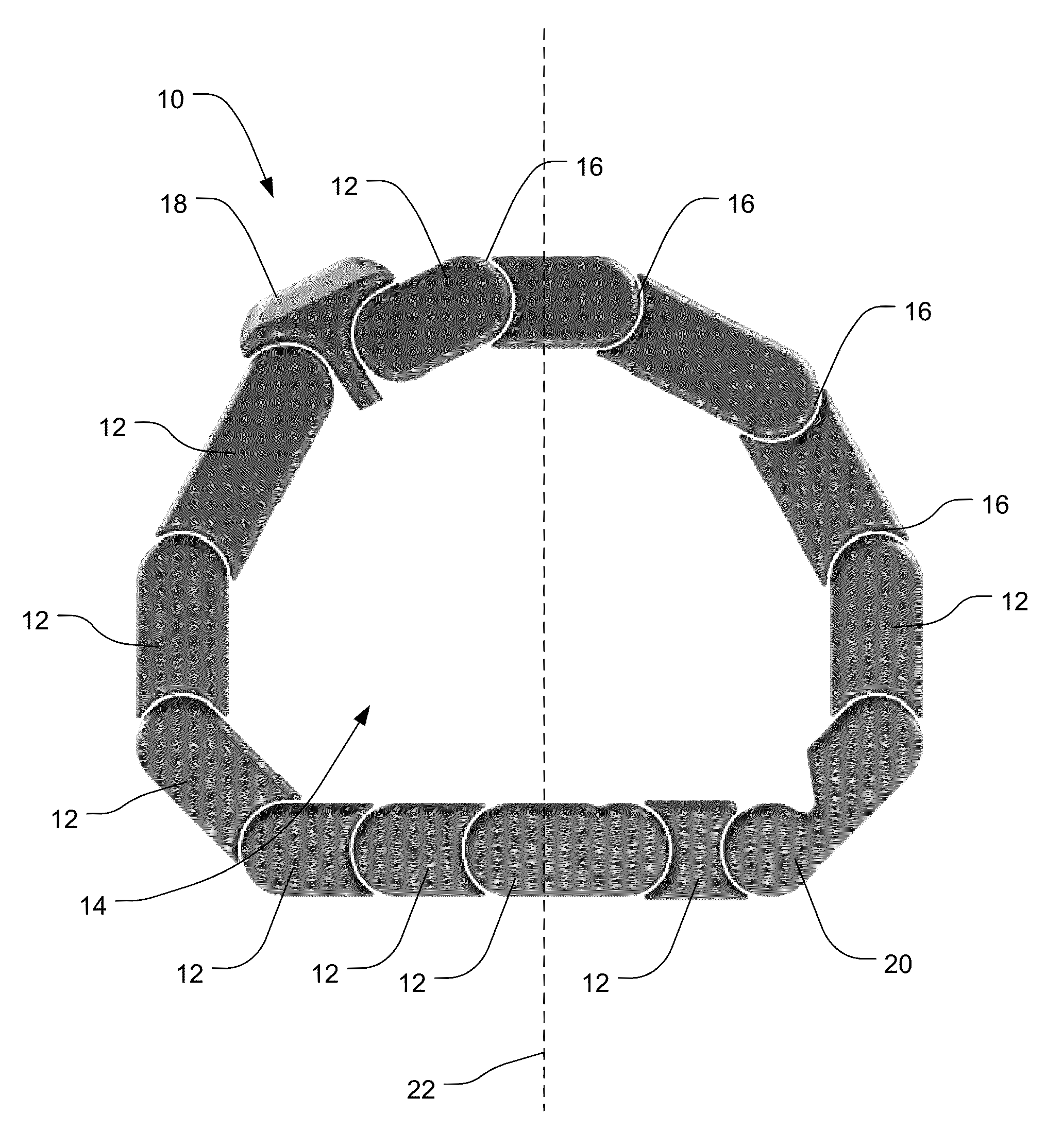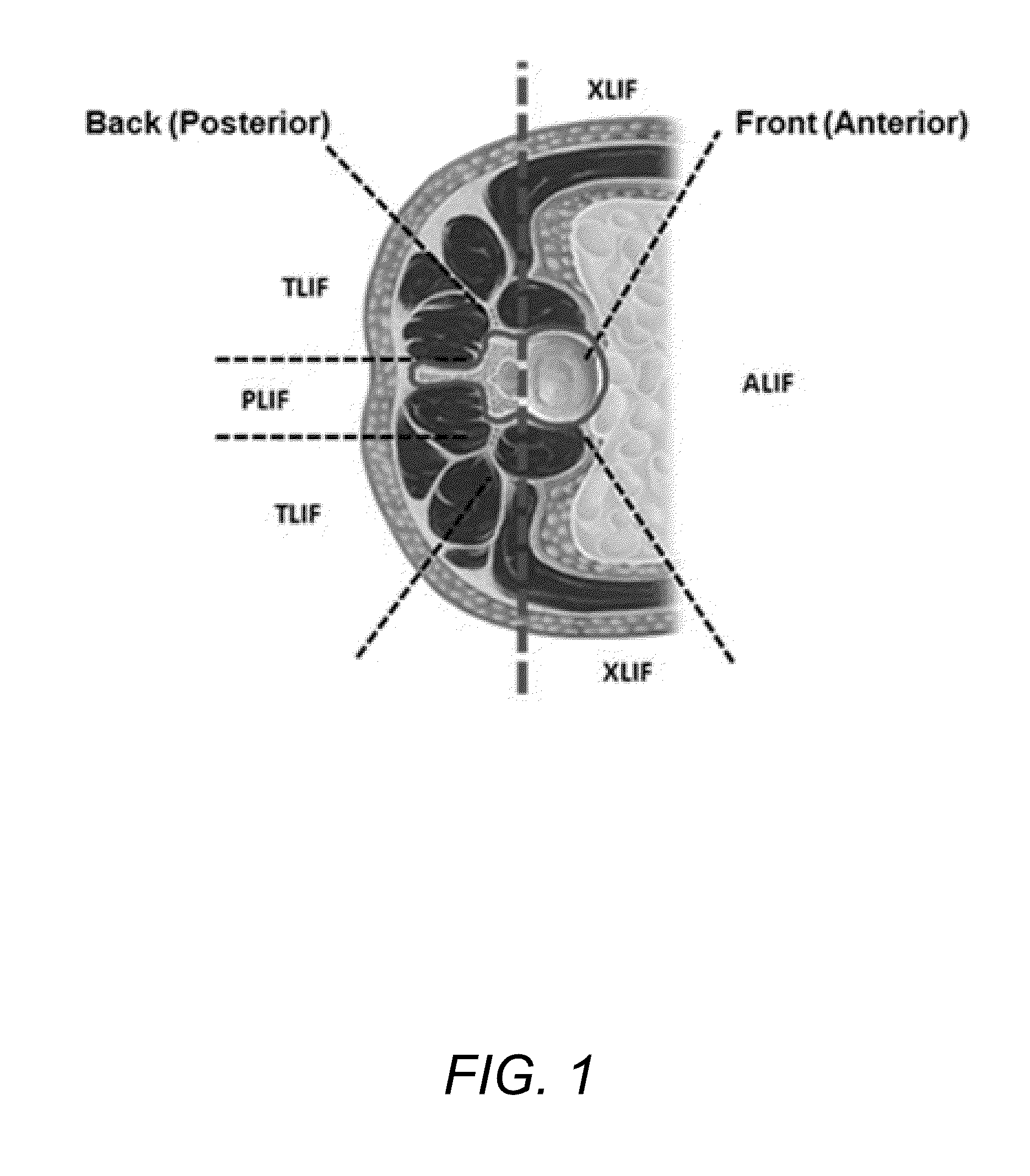IBD Expandable Ti
a technology of ibd and ti, which is applied in the field of expanding interbody spacers, can solve the problems of destabilizing the spine, affecting the quality of life of patients, and affecting the quality of life of patients, and achieves the effect of reducing the trauma of ali
- Summary
- Abstract
- Description
- Claims
- Application Information
AI Technical Summary
Benefits of technology
Problems solved by technology
Method used
Image
Examples
Embodiment Construction
[0046]A description of embodiments of the present invention will now be given with reference to the Figures. It is expected that the present invention may take many other forms and shapes, hence the following disclosure is intended to be illustrative and not limiting, and the scope of the invention should be determined by reference to the appended claims.
[0047]Embodiments of the invention provide an expandable interbody spacer capable of being used in minimally invasive spinal fusion procedures such as PLIF and TLIF while providing a final implant size more commonly in use with more-invasive spinal fusion procedures such as ALIF, XLIF, and DLIF. Additionally embodiments of the implant can also be used to minimize the trauma of ALIF, XLIF, or DLIF surgical approaches by minimizing the needed surgical window. Embodiments of the invention also provide methods for manufacturing such interbody spacers and methods for using such interbody spacers.
[0048]According to embodiments of the inve...
PUM
 Login to View More
Login to View More Abstract
Description
Claims
Application Information
 Login to View More
Login to View More - R&D
- Intellectual Property
- Life Sciences
- Materials
- Tech Scout
- Unparalleled Data Quality
- Higher Quality Content
- 60% Fewer Hallucinations
Browse by: Latest US Patents, China's latest patents, Technical Efficacy Thesaurus, Application Domain, Technology Topic, Popular Technical Reports.
© 2025 PatSnap. All rights reserved.Legal|Privacy policy|Modern Slavery Act Transparency Statement|Sitemap|About US| Contact US: help@patsnap.com



